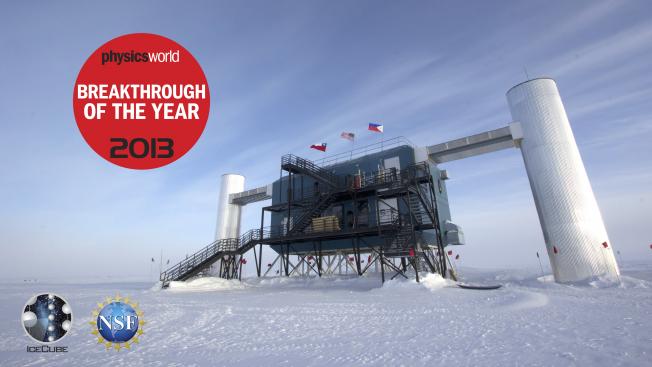Measurement of Atmospheric Neutrino Oscillations at 6-56 GeV with IceCube DeepCore.
Physical Review Letters 120:7 (2018) 071801-071801
Abstract:
We present a measurement of the atmospheric neutrino oscillation parameters using three years of data from the IceCube Neutrino Observatory. The DeepCore infill array in the center of IceCube enables the detection and reconstruction of neutrinos produced by the interaction of cosmic rays in Earth's atmosphere at energies as low as ∼5 GeV. That energy threshold permits measurements of muon neutrino disappearance, over a range of baselines up to the diameter of the Earth, probing the same range of L/E_{ν} as long-baseline experiments but with substantially higher-energy neutrinos. This analysis uses neutrinos from the full sky with reconstructed energies from 5.6 to 56 GeV. We measure Δm_{32}^{2}=2.31_{-0.13}^{+0.11}×10^{-3} eV^{2} and sin^{2}θ_{23}=0.51_{-0.09}^{+0.07}, assuming normal neutrino mass ordering. These results are consistent with, and of similar precision to, those from accelerator- and reactor-based experiments.Erratum: Constraints on Ultrahigh-Energy Cosmic-Ray Sources from a Search for Neutrinos Above 10 PeV with IceCube [Phys. Rev. Lett. 117, 241101 (2016)]
Physical Review Letters American Physical Society (APS) 119:25 (2017) 259902
Magneto-optic probe measurements in low density-supersonic jets
Journal of Instrumentation IOP Publishing 12:December (2017) P12001
Abstract:
A magneto-optic probe was used to make time-resolved measurements of the magnetic field in both a single supersonic jet and in a collision between two supersonic turbulent jets, with an electron density ⇡ 1018 cm3 and electron temperature ⇡ 4 eV. The magneto-optic data indicated the magnetic field reaches B ⇡ 200 G. The measured values are compared against those obtained with a magnetic induction probe. Good agreement of the time-dependent magnetic field measured using the two techniques is found.Neutrino astronomy at the South Pole: Latest results from the IceCube neutrino observatory and its future development
Nuclear Instruments and Methods in Physics Research Section A Accelerators Spectrometers Detectors and Associated Equipment Elsevier 876 (2017) 72-75



